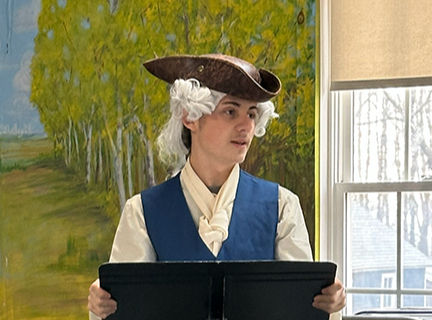Excerpt from Humanities Essay: Milton's Demons
- Jeff Philbrick

- Jun 18
- 2 min read
Carter Woodrow ('25)

Milton’s great epic, titled Paradise Lost, opens pre-creation after the fall of Satan. Milton primarily focuses on the discussions amongst the demons in his first couple of books. He highlights God’s sovereignty over them as well as their various plans to defy God and free themselves. Milton’s manner of portraying spiritual things, especially demons, and providence has caused me to think differently about them and see a potential possibility for what they could be like.
Milton’s demonic portrayal has given me an example of what the Bible states when it talks about Satan (one of many demons) being crafty, grand, and disguising himself as an angel of the light. This is demonstrated especially through the way Milton portrays the appearance and speech of Satan. Milton writes, describing Satan,
“In shape and gesture proudly eminent stood like a tower; his form had not yet lost all her original brightness, nor appear’d less than archangel ruin’d. And th’excess of glory obscur’d as when the sun new risen looks through the horizontal misty air,” (Milton 1.589-595).
Milton’s description of Satan is grand and bold. Satan is not a hideous creature in Milton’s epic. Milton’s description has a proud, confident demon who still possesses many of the qualities from his angelic glory. Milton appears to take seriously in his writing the biblical descriptions of Satan. This causes me and those in Milton’s time period to think differently of Satan, beginning with his looks. Oftentimes, when thinking of Satan, we imagine a big, red, hideous guy with a pitchfork. Instead, Milton wants the reader to think of him as a glorious angel whose appearance has only been slightly marred. Milton’s perspective on the appearance of Satan and the other demons truly demonstrates their craftiness and deceit. Milton’s demons are still big, bold, and grand on the outside. The narrator and the plot of the story will later demonstrate Satan’s true colors. This means that Milton provides a picture of the biblical description that Satan, the prince of darkness, “disguises himself as an angel of the light” and through such a portrayal, Milton causes the reader to think more clearly and differently about his craftiness.
It is not however, merely in Milton’s physical portrayal of the demons that they are presented as clever, smart talkers, but also through their speech. Three of the demons give grand eloquent speeches about what they ought to do now that they are stuck in prison. These speeches demonstrate the demonic eloquence and craftiness. Moloch boldly proclaims, “No, let us rather choose, O’er heaven’s high towers to force resistless way, Turning our tortures into horrid arms Against the Torturer” (Milton 2.61-68). Moloch there expounds his horrid idea (to make full on war against heaven) in the grandest, most eloquent manner. This means even the demonic speech and language are attractive; essentially, every single physical or outward appearance of the demons is shown to be so in Milton’s epic. Milton creates physically attractive but inwardly disgusting demons.

.png)














Comments